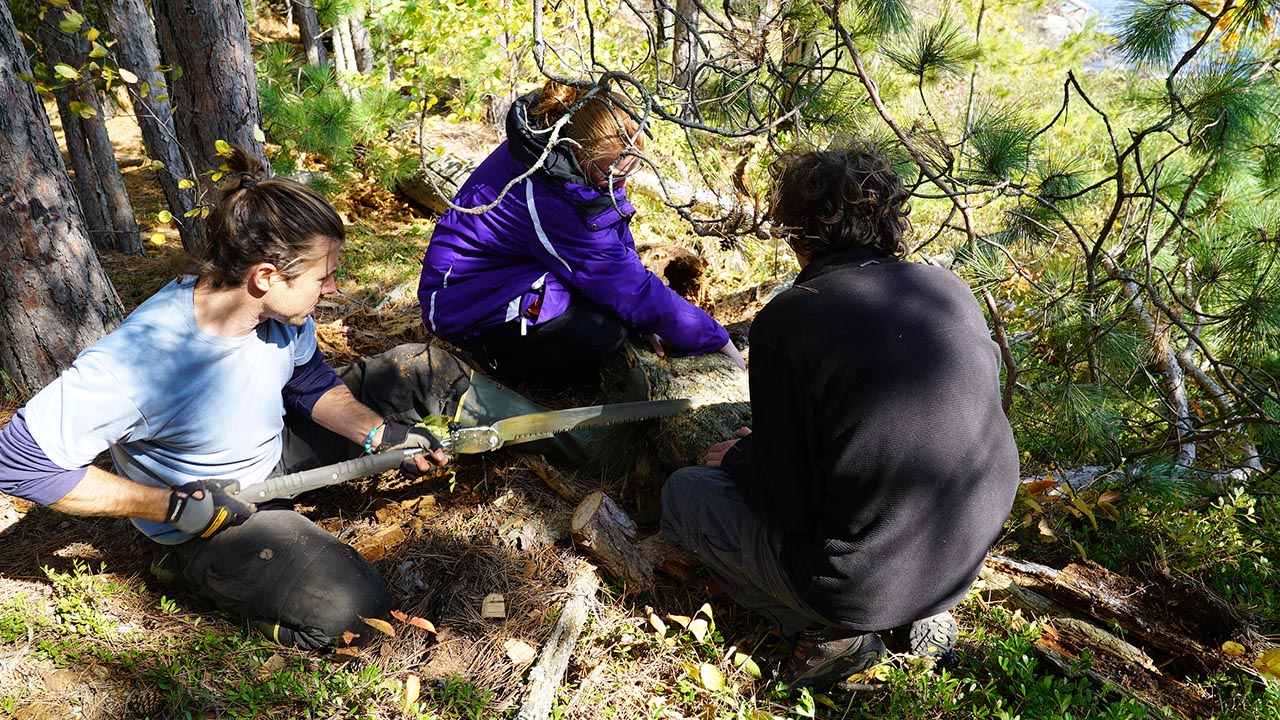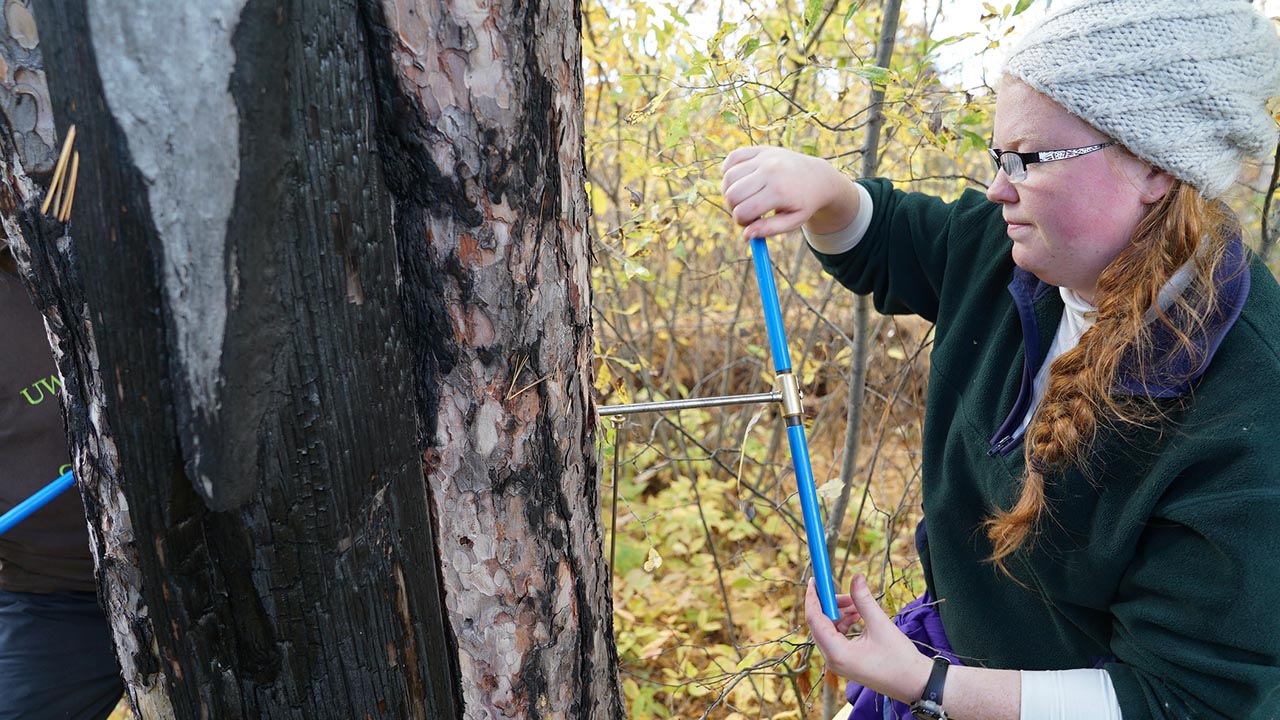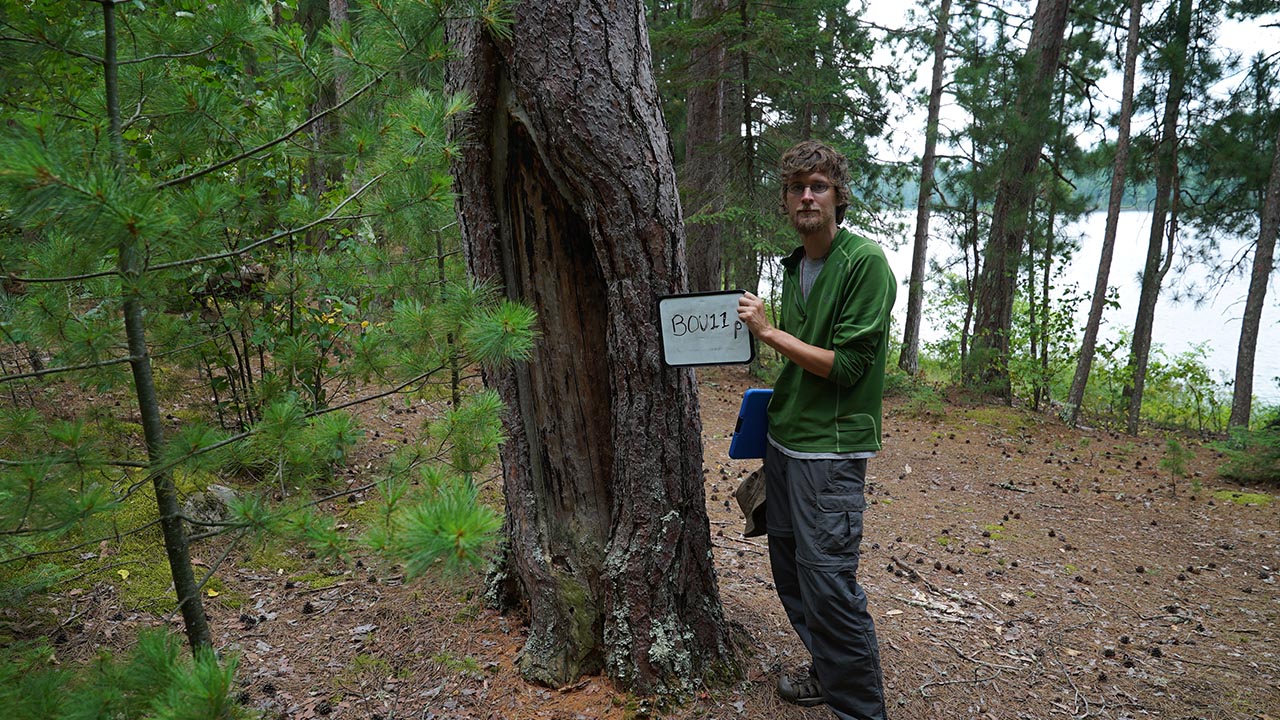


Dr. Evan Larson, associate professor of geography at the University of Wisconsin-Platteville, two former students and three other colleagues recently co-authored an article about their tree-ring research, “Faces in the Wilderness: a New Network of Crossdated Culturally-Modified Red Pine in the Boundary Waters Canoe Area Wilderness of Northern Minnesota, USA.”
The article is in the October 2019 issue of the interdisciplinary journal “Human Ecology,” published by Springer Publishing in New York City, New York. Co-authors include Larson; Lane Johnson, University of Minnesota, former research specialist and geography instructor at UW-Platteville; UW-Platteville alumnus Thomas Wilding, Nicolet Area Technical College, former geography lab instructor at UW-Platteville; UW-Platteville alumna Kalina Hildebrandt, United States Department of the Interior, Nevada; Dr. Kurt Kipfmueller, University of Minnesota; and Lee Johnson, Superior National Forest.
The article, a result of the group’s research in the Boundary Waters Canoe Area Wilderness in northern Minnesota over the past six years, explores how tree-ring analysis of peel scars on culturally modified red pine trees, whose bark was intentionally removed for a variety of purposes, provides an opportunity to merge tree-ring records of human land use with archaeological records, historical travel accounts and traditional knowledge to enhance understanding of Anishinaabeg – Indigenous people, also known as Ojibwe, whose ancestral lands include what is known today as Canada and the United States – land tenure in what is today protected as federal wilderness areas.
“The story from these records suggests that Anishinaabe land use in the 1700s and 1800s likely led to the development of many of the spectacular stands of red pine that people seek today as places they think of as pristine nature,” said Larson. “This research illustrates long-term relationships between people and the environment that run counter to most conceptions of wilderness, and provides an important opportunity for conversation within our society of how we can act as good stewards of the landscape that support us.”
The research process was deeply involved and, in many cases, rigorous. It began with an extensive, three-year field campaign through which Larson and his collaborators paddled hundreds of miles throughout the wilderness, used crosscut saws to cut sections of dead and down trees and stumps and hauled hundreds of pounds of resinous wood out of the wilderness in portage packs.
Project participants then worked in the woodshop to sand each sample to a high polish where individual wood cells were visible under a microscope, then spent months analyzing growth patterns in each sample to determine how they matched to known growing conditions based on the annual growth rings of nearby living trees.
In this way, Larson and his team were able to establish over 300 years of history about human land use across the Boundary Waters Canoe Area Wilderness and compare this record to known travel routes and cultural change.
“This information is now being used to advance conversations about the fundamental concepts of wilderness and how these ideas shape approaches to management and shared decision making with Indigenous cultures,” said Larson.
Hildebrandt, a reclamation guide at the Department of the Interior, Bureau of Reclamation, Hoover Dam, said she was very excited to hear about the publication. “Seeing the end result of all the hard work that went into the research and writing is particularly rewarding,” she said. “I am incredibly grateful for the opportunity to work across different fields of study. I really enjoyed the hands-on research that was involved in this project. Being able to go out and collect samples and then work with them in the Tree-Ring, Earth, and Environmental Sciences Laboratory allowed me to really immerse myself in the project.”
Hildebrandt noted the opportunity to apply her education and skills in a project like this while still an undergraduate student was a great way to prepare for the working world and further education. “I have used the knowledge and skills I learned directly, applying so much to my everyday work in the field of history,” she said. “Working at Grand Portage National Monument, I was able to tie together the fur trade history happening in the Boundary Waters Canoe Area Wilderness with Grand Portage’s history of the same era. Researching, writing and presenting historical content is key to my career in historical interpretation, and this project was instrumental in me honing these skills.”
“What consistently struck me while working on this project was the enthusiasm and connection people we met felt towards the project,” said Wilding, who, in addition to teaching at UW-Platteville, worked in the university’s TREES Lab at the time of the project. “This project could not have been as successful as it was without the time, effort, resources and, most importantly, knowledge others shared with us. This project was important to a lot of people, and while they ended up being more numerous than could be named, their contributions were why this was successful. That, to me, was the best part of working on this project; it was a collaborative effort that brought people together and worked on building bridges.”
The research was made possible with funding from the National Science Foundation, the Coalition for Archaeological Synthesis, and the United States Department of Agriculture Forest Service. In all, this work provided research experiences to over 25 UW-Platteville students and led to nine student presentations and regional and national conferences.
On a larger scale, this work helped establish lines of communication and collaboration with multiple Indigenous communities around the Great Lakes and has created exciting opportunities for future collaborations. The work is continuing to open new opportunities, including an upcoming panel at the Society for Historical Archaeology conference in Boston, Massachusetts, in January 2020.